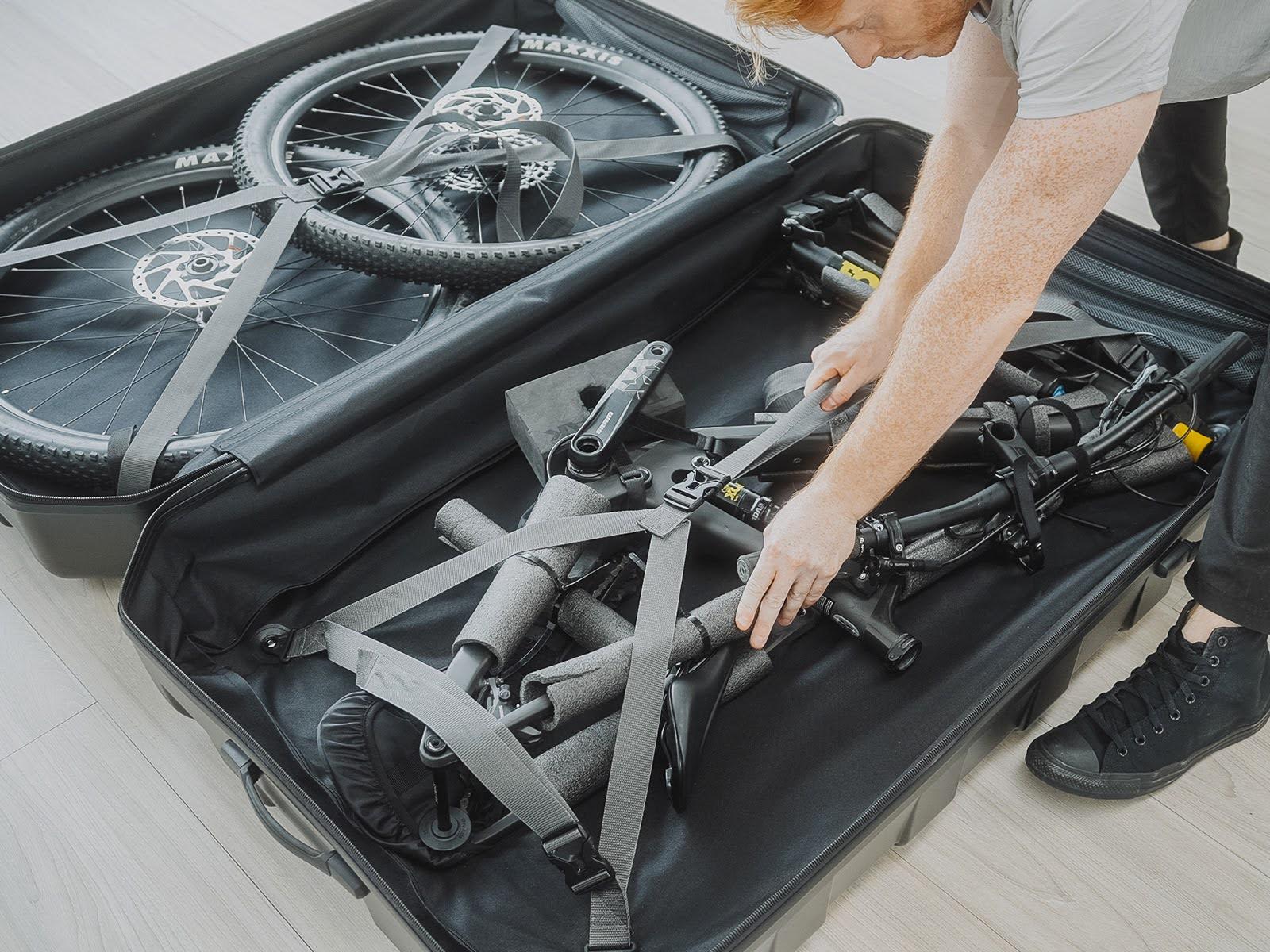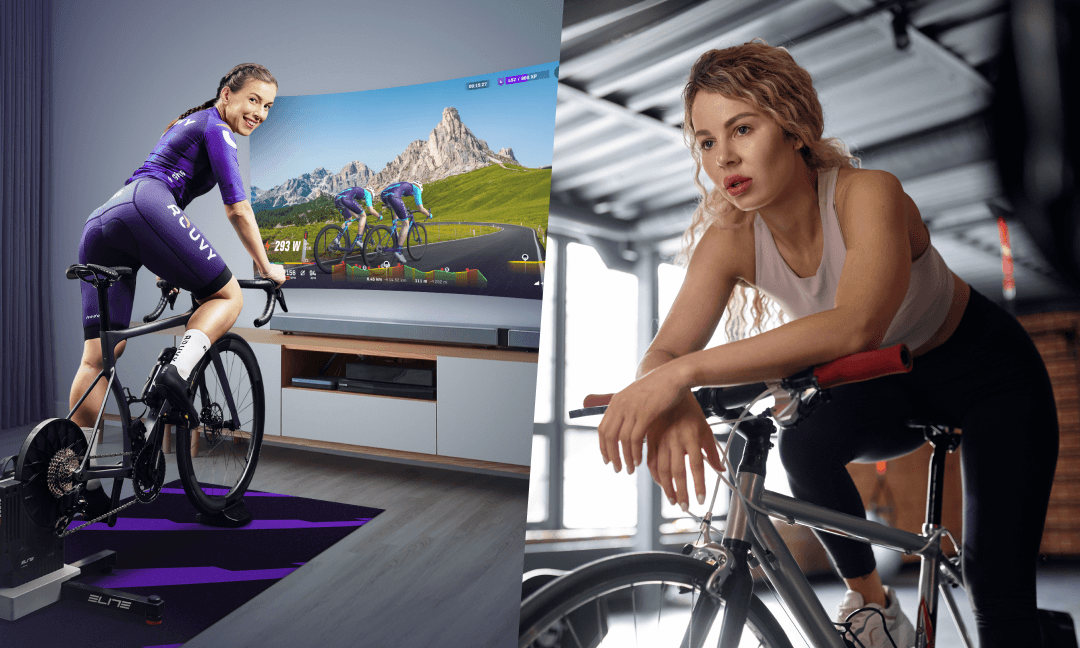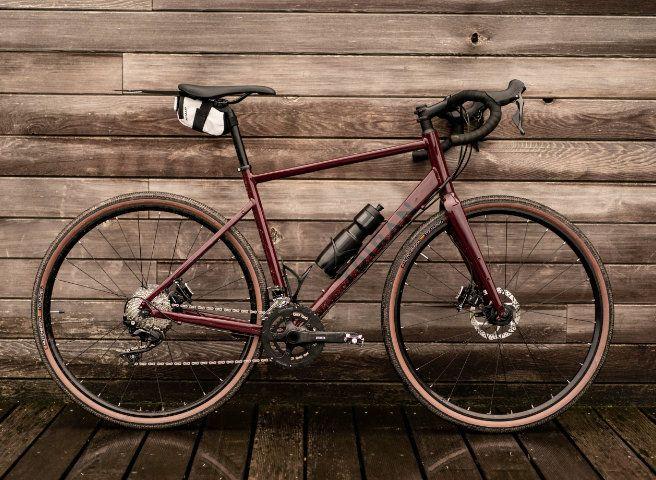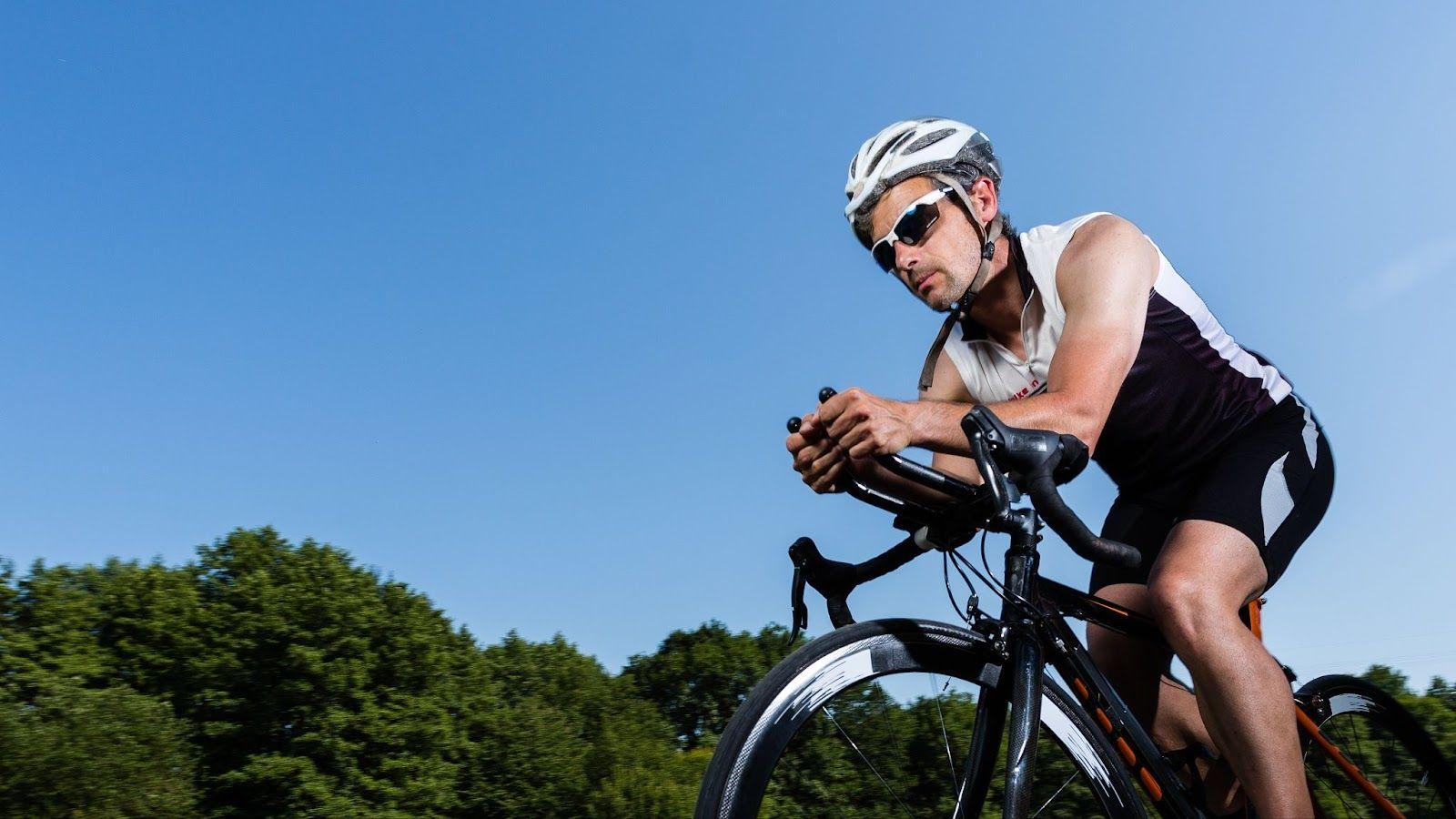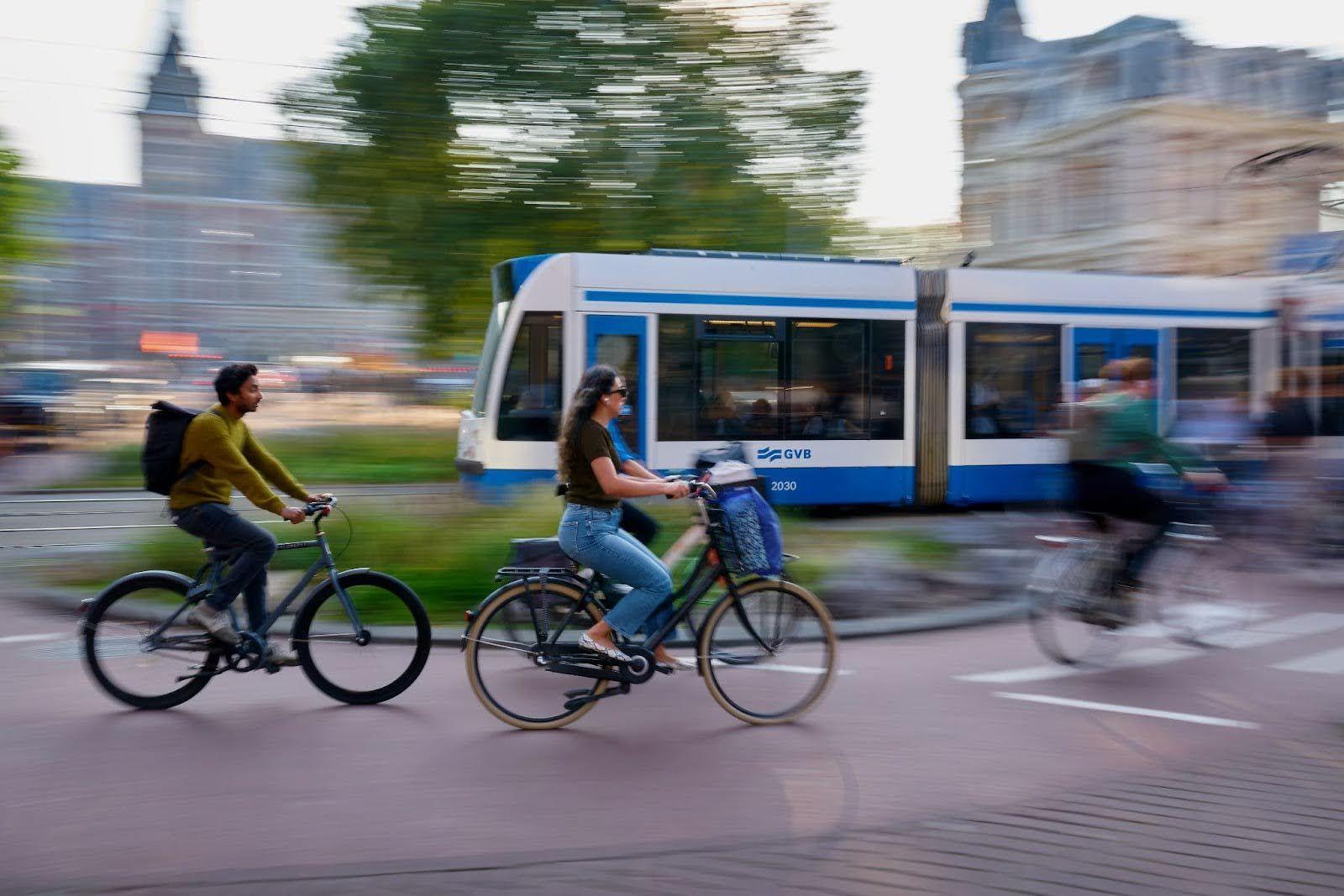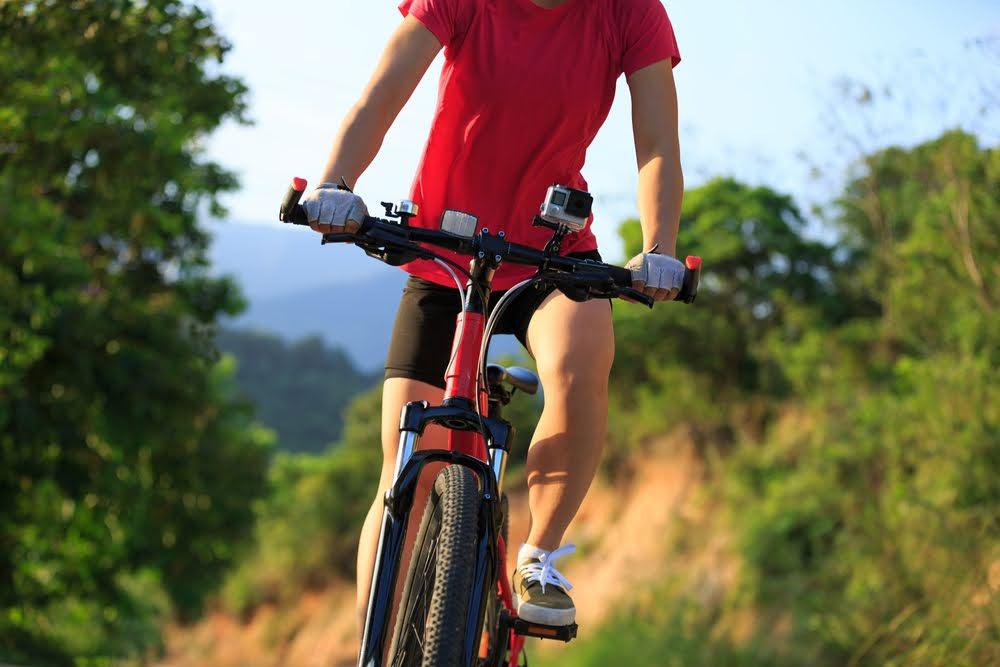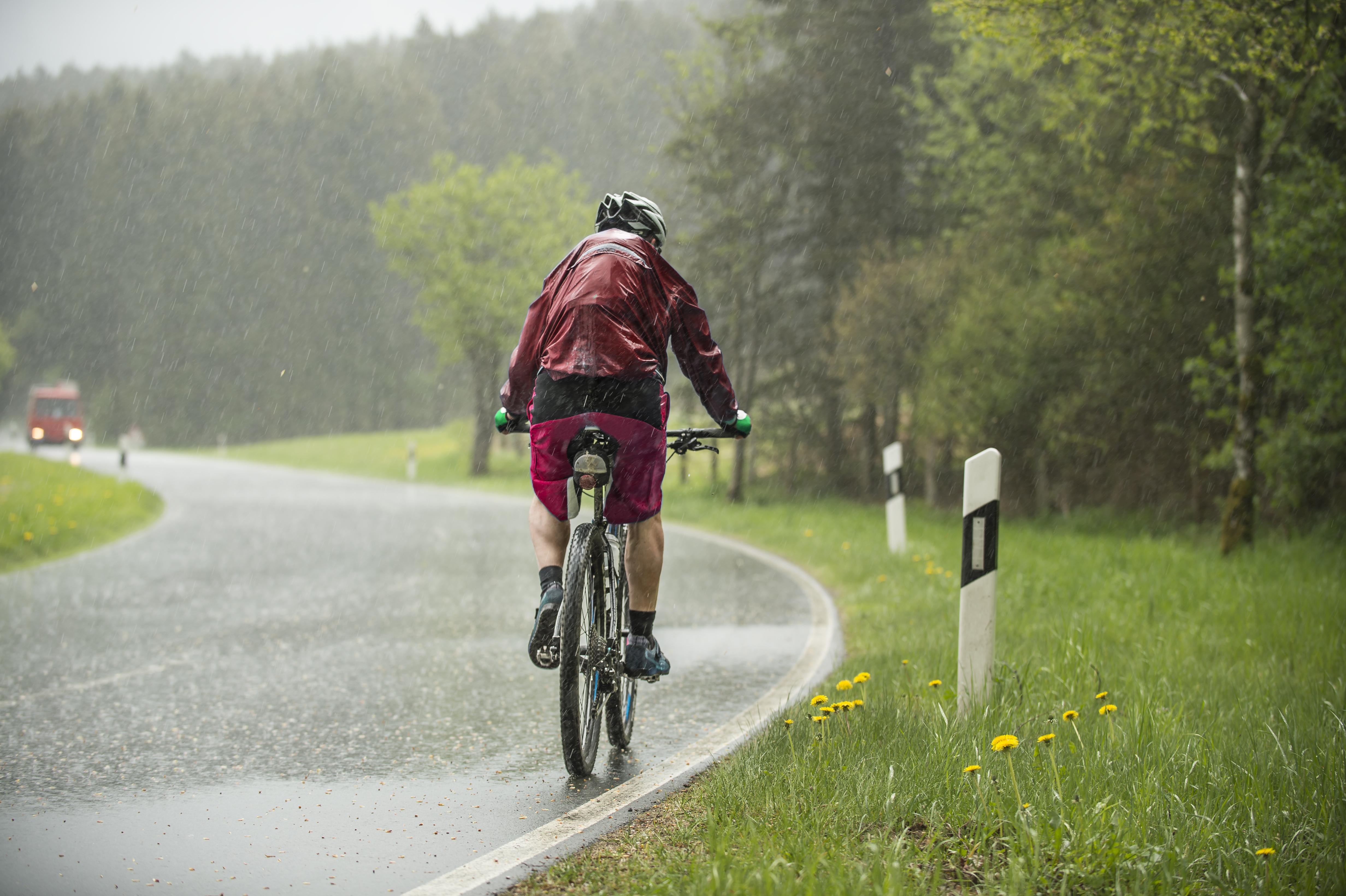Cyclists gonna cycle! Despite all the tech and trends associated with it, the simple act of cycling is still one of the most popular pastimes in the world. And it’s cheap and environmentally friendly to boot. From open roads to fitness, new friends and adventure, it’s for everyone from pros to weekend warriors.
E-bikes, gravel biking (especially in the US) and indoor cycling apps may be the hot new things, but road cycling is still the most popular, even though it’s taken a slight dip recently.
It’s for this reason, for most beginners, the journey into cycling often starts with budget road bikes. After a quick online search , it might seem like all good road bikes are expensive but it’s not the case - there are plenty of affordable road bikes that are practical, accessible and perfect for newbies. Choosing a budget bike as your first ride is smart because it lets you get into the cycling world without big upfront costs or commitments, leaving room to upgrade as your passion and knowledge grows.
This guide will go deep into why budget road bikes make sense, what to look for when choosing your first bike and what to avoid. By the end you’ll know exactly how to pick a dream bike that fits your budget and needs and enhances your early cycling experiences as you start your first forays into this amazing sport.
Why choose a road bike?
Before we get into how to choose a budget road bike, it’s useful and important to understand the bigger picture of bike types. There are several categories to consider, each for different terrain and your own preferences. You need to ask yourself ‘How do I want to use my bike and where will I be going?’ Mountain bikes are for rugged trails and off-road adventures, with suspension and wide, knobby tires to get you through the terrain. Gravel bikes are versatile and comfortable on mixed surfaces, great for long distance exploration. Hybrid bikes are a mix of road and mountain bikes and are used for casual commuting or fitness riding on varied terrain.But for anyone focused on fitness, endurance rides or speed on paved surfaces, a road bike is usually the way to go. As the name suggests, they’re for roads so they’re lightweight and efficient, with narrow tires and a design that encourages smooth fast riding. A road bike gives you the platform to build up your skills and endurance while maximising efficiency.

Cost effective entry into cycling
If you really get the bug, going all out for a high end bike and keeping up with the latest trends for road bike gear then road cycling can certainly be an expensive hobby. But it doesn’t have to start that way. Choosing a bike at the lower end of the budget range is the smart way to start and provides a practical entry point, giving beginners the chance to try cycling without spending a lot of money on higher end models. Manufacturers understand this and most well known brands offer budget friendly options with quality builds and components that deliver reliable performance and durability. Brands like Giant, Decathlon and Specialized for example offer entry level bikes that won’t break the bank but still deliver a great ride.
Ideal for Learning and Exploration
When you first start cycling you’re still discovering what you enjoy the most - long distance riding, hill climbs, racing or casual weekend spins. A budget bike offers flexibility and reduces pressure. If your riding preferences change and evolve you can always upgrade later or switch to a different type of bike. Taking your first steps on a budget bike also gives room for inevitable beginner mistakes like minor falls or accidental gear abuse without the stress of damaging expensive equipment. Beginners can also change their gear settings to suit different riding conditions and enhance their overall riding experience and learn how their bike works.
Affordable doesn’t mean poor quality
There’s a common myth that “budget” means “low quality” but in reality today’s entry level road bikes are surprisingly high performing. Modern manufacturing techniques and increased competition among brands have raised the bar. Thanks to technology bikes under $1,000 can often match or even outperform the higher end bikes of a decade ago. This is mainly due to advancements in materials and manufacturing processes that have made it possible to produce lighter, stronger and more efficient bikes at a fraction of the cost. For example the integration of aluminium frames and carbon forks in budget bikes offers a combination of durability and comfort that was once reserved for premium models. Plus the widespread adoption of reliable groupsets like Shimano Claris and Sora means even entry level models now deliver smooth shifting and dependable performance. And increased competition among brands has given us a wider range of bike options so you can pick a combination of features to customise your bike to your needs and preferences.
Key things to consider when choosing your first budget road bike
Frame Material: Aluminium, Steel or Carbon?
Choosing the right frame material is important as it affects ride quality, durability and cost:
Aluminium: Lightweight, affordable and most common in budget bikes. Stiff so good for beginners.
Steel: Heavier than aluminium but offers a smoother more comfortable ride. Great if you plan to ride rougher terrain or longer distances.
Carbon: Lightweight and great at absorbing road vibrations but usually more expensive. Higher end models often have a carbon fibre frame which enhances performance and comfort by reducing weight and increasing stiffness.
Most beginners find aluminium frames (or aluminum frames for US readers) with carbon forks a good compromise between comfort, weight and affordability.
Components and Groupsets: Shimano, SRAM or Campagnolo?
The groupset which includes your bike’s gears, braking systems and drivetrains can have a big impact on a bike’s performance. Here’s a quick rundown of some of the most common entry level groupsets:
Shimano Claris (8-speed): Reliable and common on budget bikes; good for casual riders and beginners.
Shimano Sora (9-speed): Smoother shifting and slightly better performance; good for beginners who will be riding more often.* Shimano Tiagra (10-speed): Higher quality components, smoother shifting and better durability, often found on bikes at the upper end of budget pricing.
SRAM Apex or Rival: Less common but still reliable shifting; found on budget gravel or endurance-style road bikes.
Shimano groupsets dominate the budget bike market due to their reliability, ease of maintenance and wide availability of spare parts.
Bike geometry and sizing: handling and comfort
Proper bike fit and geometry is important as it determines how the bike looks and handles and affects your comfort, riding efficiency and injury prevention. There are two main geometry types to consider:
Endurance Geometry: More upright and relaxed position, perfect for beginners, recreational riders or anyone who will be riding longer.
Race Geometry: Aggressive, aerodynamic position designed for speed, less comfortable for beginners.
For your first bike it’s recommended to prioritise comfort and fit over aggressive positioning. Use brand specific sizing charts, measure your inseam. It might cost extra but consider professional or shop-assisted fittings to ensure your bike matches your body dimensions - it will make a big difference.
Wheels and tyres: Comfort and speed
Budget road bikes come with alloy wheels and tyres ranging from 25mm to 28mm wide. Narrower tyres are faster while wider tyres (28mm) are more comfortable and better grip, especially helpful for beginners still gaining confidence and balance. They also translate well for your indoor cycling sessions on trainers or virtual platforms like ROUVY, for a versatile cycling experience.
Brakes: Rim vs. Disc
The choice between disc and rim brake bikes can have a big impact on your riding experience:
Rim Brakes: Lighter, simpler and cheaper to maintain. Less powerful especially in wet conditions.
Disc Brakes: Better stopping power in all conditions and widely available on budget models. There are two types of disc brake - mechanical and hydraulic. Hydraulic are better but more expensive and require more maintenance.Disc brakes outperform rim brakes in almost every aspect but rim brakes are cheaper and easier to maintain. Disc brakes are becoming more common in all types of cycling and are recommended if you expect varied weather or hilly terrain, though rim brakes are sufficient for fair weather riders or flat routes.
New or Secondhand Road Bike?
One of the biggest decisions for beginner cyclists is whether to buy new or secondhand. Each option has its pros and cons and understanding these can help you make the best choice for your situation.
Buying New
Buying new has several clear advantages. First, you have warranty coverage so if there are any manufacturer defects or issues the retailer or manufacturer will sort it out for you. New bikes come with the latest tech and components so better performance and reliability out of the box. Plus buying new usually includes professional fitting and setup so you’ll be comfortable and performing from day one.
However, the obvious downside is cost - new is more expensive than used. Discounts and deals can be found if you look around online but buying new online without being able to test the bike also comes with downsides.
Buying Secondhand
Secondhand bikes offer great value for cyclists who want to stretch their budget. A well maintained used bike can deliver similar performance to a new one at a fraction of the cost. This can sometimes allow you to get higher quality components and frames within your budget.
But buying secondhand requires caution. Do your homework. You should inspect the bike thoroughly for damage, wear and tear or potential safety issues. Essential checks include frame integrity (look for cracks or dents), drivetrain condition (chain, gears, cassette), wheel alignment and brake performance. Sometimes potential issues can’t be seen by the untrained eye. So if possible have the bike checked by a professional mechanic or knowledgeable friend. Ask about the bike’s history, including past servicing records and storage conditions can also give you valuable insights and peace of mind.
Tips for Buying a Secondhand Road Bike
Always test ride before buying to check comfort, fit and mechanical condition.
Verify the seller’s credibility especially if buying online—meet in safe public places and confirm ownership.
Be realistic about future costs; factor in potential replacements or repairs when comparing the total cost to a new one.* Measurement: Ensure precise measurements of the frame size and other bike components to get optimal comfort and efficiency. Measurement is key to a good fit, performance and minimising discomfort or injury during rides.
In summary, buying new is convenient, reliable and has warranty protection and that’s ideal for beginners who want simplicity and just want to ‘buy-and-go’. Secondhand bikes offer great value and can be a smart way to upgrade your riding experience if approached with care, common sense and research.
Common mistakes to avoid when buying your first budget bike
Ignoring the bike fit
Many beginners make the mistake of prioritising price or looks over frame size and fit. But money and looks aren’t everything. A poorly fitted bike can lead to discomfort, inefficient riding or in the worst case, injuries. So always follow sizing guidelines, test ride when possible or seek advice from experienced cyclists or brick-and-mortar bike shops.
Overspending on non-essential features
It’s easy to get excited about all the features you see on professional bikes - electronic shifting, aerodynamic components, ultra-lightweight parts and more - the list is long. Depending on your riding style and preferences, these advanced features are usually unnecessary for newbies and just add cost without really improving performance at beginner levels.
Neglecting long-term maintenance costs
All bikes require regular maintenance, especially entry-level models. Whether used regularly or in winter storage, chains, tyres, brake pads and cables wear out over time and cyclists will suffer common issues like flat tyres. Budget accordingly, get to know your bike and learn basic maintenance skills early to prolong your bike’s life and performance.
Mistaking low cost for good value
The cheapest bikes might seem appealing but don’t let it cloud your judgement. Quality matters a lot and investing in it will save you money in the long run. Avoid extremely cheap bikes from unknown brands or large online marketplaces that compromise build quality and have no support service. Otherwise your final price might often include frequent repairs, disappointing performance and short lifespan. Instead try to find the balance between cost, reliability and reputable branding as it’s worth investing in a bike that offers both quality and durability.
Best Budget Road Bikes for Beginners
Now let’s get to the recommendations with our beginner road bike guide. Choosing your first road bike becomes much easier once you know what to look for and what’s out there. With countless options in the market, narrowing down your choices can be overwhelming. To help you start pedalling quickly and confidently, we’ve selected five budget-friendly road bikes that consistently get high praise and reviews from cyclists and experts alike.
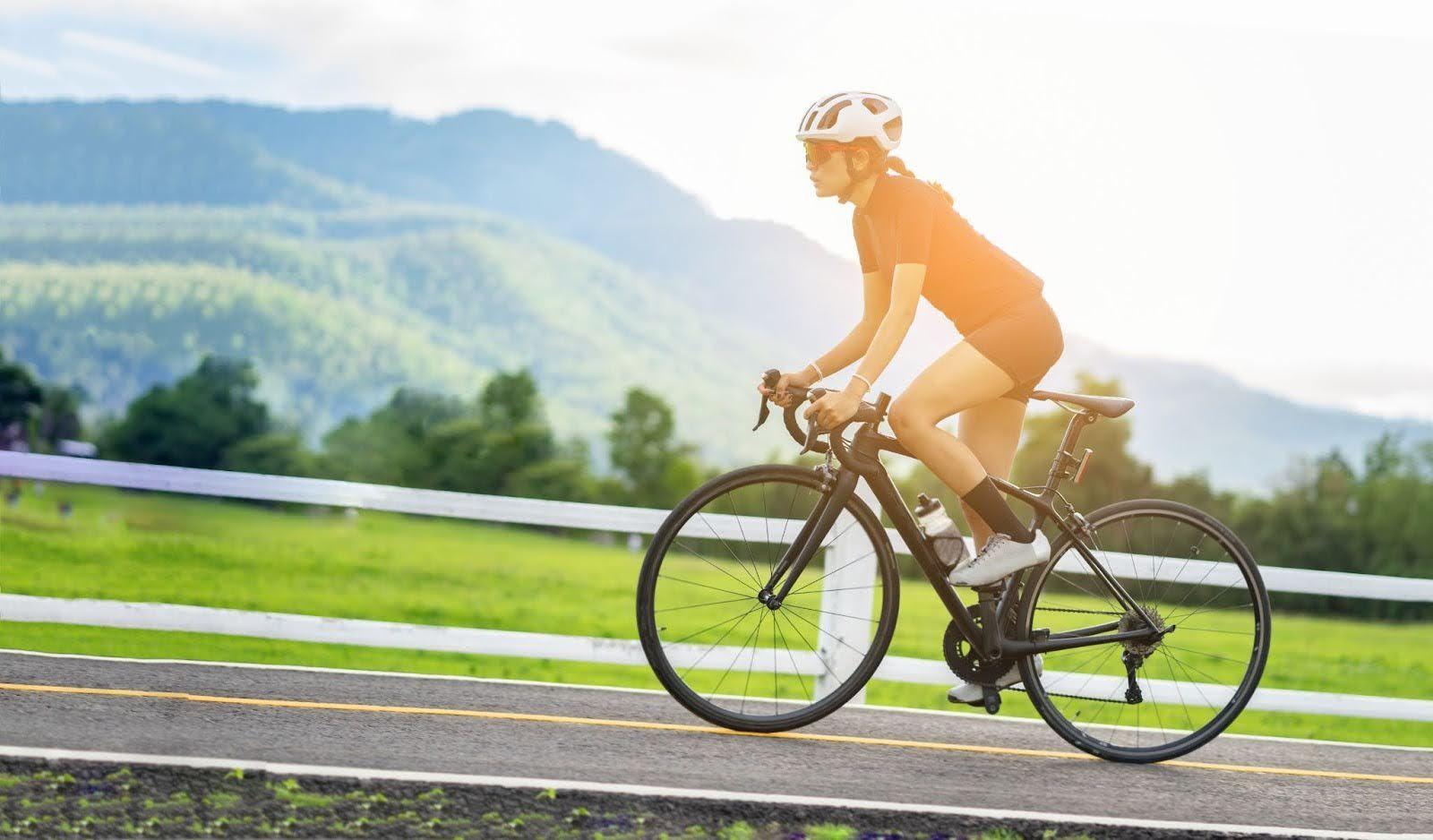
1. Decathlon Triban RC 520
Price: Around $1,100 Best For: Riders looking for an affordable all-rounder with premium features
Pros:
- Shimano 105 groupset typically found on more expensive bikes
- Mechanical disc brakes for reliable stopping
- Endurance geometry for longer rides
- Carbon fork absorbs road vibrations well
Cons:
- Slightly heavier frame adds to overall weight compared to rivals
Ideal Rider: Beginners and recreational cyclists looking for great value and versatility, whether commuting, weekend rides or entry-level sportives. Many cyclists dismiss Decathlon as a cheap and cheerful chain. But they shouldn’t - Decathlon bikes deliver an amazing bang for your buck.
2. Giant Contend 3
Price: Approximately $950 Best For: New cyclists prioritising comfort and simplicity
Pros:
- Shimano Claris drivetrain
- Relaxed geometry for beginners with adjustable seat height for optimal bike fit
- Alloy frame
- Widely available through local bike shops
Cons:
- Entry-level components may feel limiting as you progress
_Ideal Rider: _Casual riders or beginners who want a reliable, comfortable and easily maintainable bike from a well-known brand.
3. Specialized Allez
Price: $1,000–$1,200 Best For: Cyclists looking to grow their skills and upgrade over time
Pros:
- High-quality aluminum frame with race geometry
- Smooth handling
- Highly upgradable
- Available at most Specialized dealers for easy service
Cons:
- Stock wheels can feel a bit sluggish, encouraging upgrades in the future
Ideal Rider: Fitness oriented riders who want to improve their performance and might also have a desire for local group rides or amateur racing.
- Cannondale CAAD Optimo 4****Price: About $1,100\
Best For: Aspiring fitness riders and amateur racers
Pros:
- Cannondale CAAD frame design
- Agile handling
- Modern look and reputable brand
Cons:
- Aggressive geometry might not suit riders looking for a more comfort-oriented build
Ideal Rider: Enthusiastic beginners looking for performance-oriented geometry who plan to push their fitness levels or even try their hand at racing.
5. Tommaso Imola
Price: Around $875 Best For: Cyclists looking for great value with Shimano components
Pros:
- Complete Shimano Claris groupset, a combo that ensures consistent and reliable shifting
- Direct-to-consumer pricing
- Endurance geometry
Cons:
- Heavier wheelset
- Less availability in physical retail stores
Ideal Rider: Budget-conscious beginners who appreciate value and quality without needing immediate upgrades or performance features.
How ROUVY indoor cycling enhances your outdoor cycling
Pair your new budget road bike with ROUVY’s virtual cycling app and you’ll accelerate your cycling progress, improve your skills and stay motivated all year round, even when the weather’s bad.
Structured Training and Fitness Gains
Indoor cycling with ROUVY offers structured training programmes for all levels, especially beginners. Activities include training plans, endurance rides, elevation tracking and skill-specific workouts that translate directly into outdoor cycling performance. Consistency is key with cycling and regular indoor sessions ensure steady fitness gains, even when outdoor riding isn’t possible.
Real-world routes with Augmented Reality
One of ROUVY’s standout features is the ability to ride iconic cycling routes around the world, augmented with reality (AR). Beginners can practice famous climbs, scenic rides and challenging terrain safely indoors at their own pace. This builds confidence and skills such as shifting and cadence control before tackling real-world conditions. Authentic preparation makes your outdoor rides more enjoyable and less daunting.
Motivation and Engagement
Indoor cycling platforms help with motivation, especially during bad weather or busy schedules. The immersive experience of riding virtual roads, competing in regular virtual events in different simulated locations and tracking progress keeps you engaged. ROUVY’s social and competitive features, including leaderboards and virtual races, provide extra motivation. Real and virtual prizes and rewards for completing events and challenges is another reason to hop on your trainer.
Tips for Your Road Bike and ROUVY
To get the most out of ROUVY, ensure your bike is compatible with indoor trainers (most modern budget road bikes are). You might consider investing in a good quality smart trainer and dedicated trainer tyre to reduce wear on your outdoor tyres. Position your indoor setup ergonomically to mimic outdoor riding comfort so you can transition seamlessly between indoor and outdoor cycling.
Wrap up
Choosing your first budget road bike is a big step into the world of cycling. The more you ride the more you’ll realize how life changing it can be. Combining your new bike with structured indoor cycling on ROUVY will amplify your fitness and skills so every outdoor ride is safer and more enjoyable. And you’ll quickly notice how your fitness and well-being improves. With thoughtful choices and strategic upgrades you’ll not only enhance your cycling experience but also create a sustainable and engaging fitness habit.
So go for it! Choose your bike, set up your indoor cycling space and start enjoying the best of both indoor and outdoor cycling worlds with confidence and enthusiasm.
Sources and further reading
Cycling Weekly – Best Budget Road Bikes 2025: Expert reviews and buying advice for affordable road bikes. Cycling Weekly
Cyclingnews – How to Choose a Road Bike: A comprehensive guide to choosing a road bike, including frame materials, geometry and components. Cyclingnews
Bikexchange – Road Bike Buying Guide: A detailed resource on different types of road bikes, sizing charts and component explanations to help you make a decision. Bikexchange
Cyclists Hub – How to Choose a Road Bike? [Beginner’s GUIDE] 2025: A beginner’s guide to choosing a road bike, including tips on sizing and component selection. Cyclists Hub
Bicycle Guider – Best Entry-Level Road Bikes: Top entry-level road bikes with reviews and recommendations for beginners. bicycle-guider.com
ROUVY, Bike Tyre Size Guide: How to measure and choose correctly

